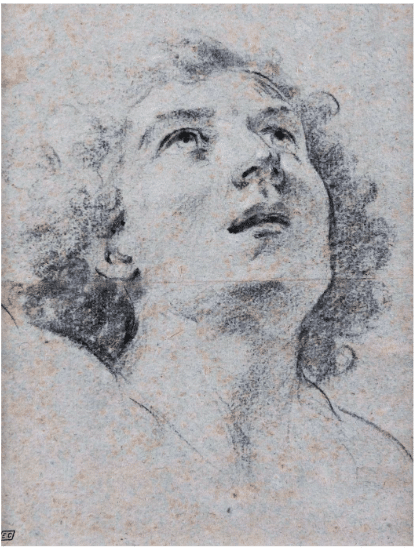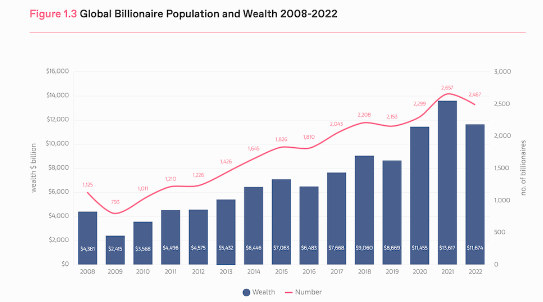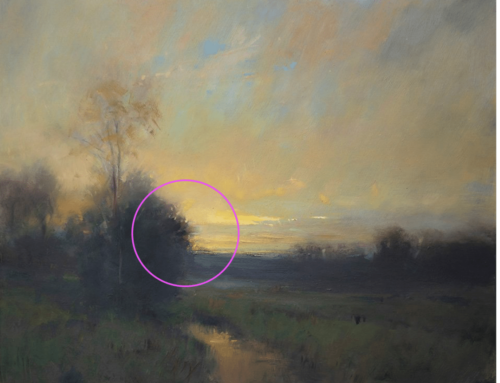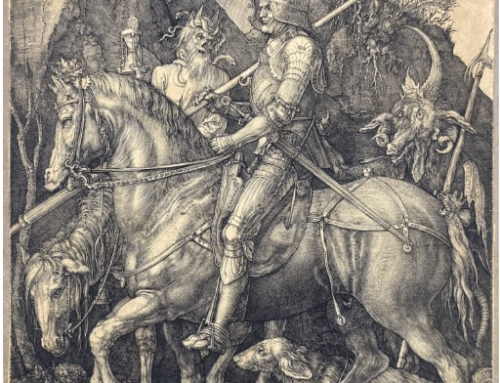When artists refer to “quality of line,” part of what’s meant is sensitivity to the subject as well as how the line is drawn. The heaviness or lightness of pressure, the varied thickness or thinness, the emphasis in one area and not another – all combine with how the artist sees the subject, and the line itself holds and conveys a good deal of the artist’s feeling.
“When the great Flemish painter Rubens made a drawing of his little boy,” says E.R. Gombrich in his art history text The Story of Art, “he was surely proud of his good looks. He wanted us, too, to admire the child.”
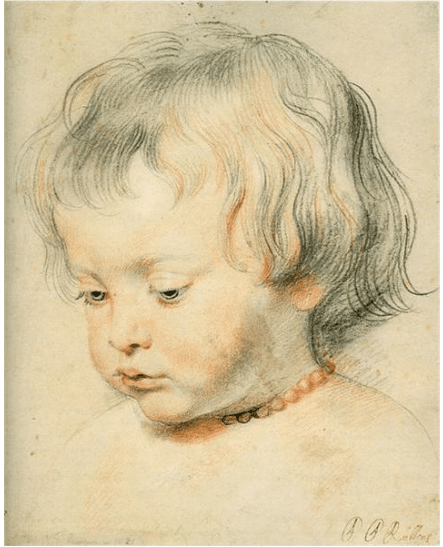
Peter Paul Rubens, “Portrait of his son Nicholas,” C. 1619
And so he kept most of his lines light, fluid, graceful – qualities he saw in his son – and left out details everywhere but where he wanted us to look – the comely features of the young boy’s face.
However, in the following caveat Gombrich raises an interesting point. “But this bias for the pretty and engaging subject is apt to become a stumbling block if it leads us to reject works which represent less appealing subjects.”
To illustrate his point the writer chooses a work that challenges us to see something in it other than what’s pleasing to the eye: Albrecht Dürer’s “Portrait of his Mother at 63,” of 1514.
“The great German painter Albrecht Dürer certainly drew his mother with as much devotion and love as Rubens felt for his chubby child,” Gombrich says. (See image below) but it completely fails to charm us the way Rubens’ drawing sets out to do. Sometimes, he suggests, art asks us to buckle up.
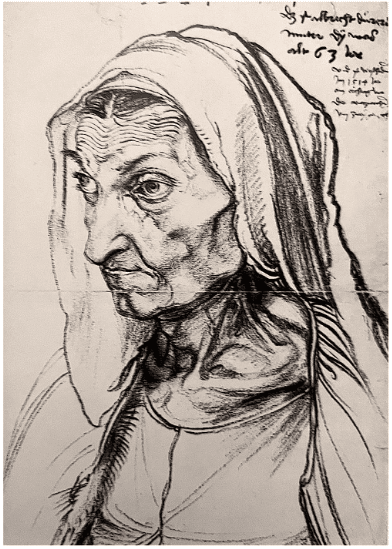
Albrecht Dürer, “Portrait of his Mother at 63,” c. 1514
“Dürer’s truthful study of careworn old age may give us a shock which makes us turn away from it,” he writes “– and yet, if we fight against our first repugnance, we may be richly rewarded, for Durer’s drawing in its tremendous sincerity is a great work.”
His main point is that “the beauty of a picture does not really lie in the beauty of its subject-matter.”
We’ve already been discussing he great Northern Renaissance draftsman, Dürer, in recent posts. Here he presents his mother with a stark realism that, at first view, might seem cruel or grotesque if we come to it with a bias about what a child is supposed to feel for a parent or how a son is supposed to see his mother. Dürer’s triumph is to see past false mental images and expected associations to the truth – real life is like this. Dürer’s drawing testifies to the dignity and perseverance of anyone who’s lived a long hard life and is looking death in the eye.
Up until Dürer’s time, such subjects were not common fare. Like other Renaissance artists interested in anatomy, science, truth, it took Dürer an extra dose of courage and determination to see and to paint his mother as she really was:
“Her face is emaciated to the point of appearing skeletal,” notes E.H. Gombrich, “her skin deeply wrinkled and shadowed, her eyes almost detached and her face seemingly looking up towards a void of despair.”
The quality of Dürer’s line in the portrait is unsparing as his observant eye – thick lines and deeply reinforced shadows emphasize how aging ravages the body, leaving the skin sagging and deeply lined. His line is rough, not tender as he lays bare the bones, tendons, veins, and skull, almost as if illustrating a textbook on human anatomy.
Dürer isn’t being cruel though. Rather, he is bearing witness. This was the prerogative of the Renaissance mind – to put aside piety so as to see and understand humanity for what we truly are. If we need proof of Dürer’s sincerity, we can turn to the artist’s writing.
The artist left notes about both his parents that are deeply compassionate, sympathetic and caring, and it is accepted that the portraits are sensitive studies of the ravages of old age and illness on human flesh, testimonies all the more courageous for the difficult emotions he was personally dealing with. After her death, her grieving son wrote:
This my pious Mother bore and brought up eighteen children; she often had the plague and many other severe and strange illnesses, and she suffered great poverty, scorn, contempt, mocking words, terrors, and great adversities. Yet she bore no malice. She feared Death much, but she said that to come before God she feared not. Also, she died hard, and I marked that she saw something dreadful, for she asked for the holy-water, although, for a long time, she had not spoken. Immediately afterwards her eyes closed over. I saw also how Death smote her two great strokes to the heart, and how she closed mouth and eyes and departed with pain. I repeated to her the prayers. I felt so grieved for her that I cannot express it. God be merciful to her.”
Writer Jordan Wolfson would surely be sympathetic. “What if painting, actually, is about the interaction between two minds, two hearts, two beings—the painter and the viewer?” he says. “What if painting is about a way of coming to the world, a kind of communion?
Many think of drawing as the essential foundation for good painting. If you think your skills could use some “professional help” (haha) check out one of the many high-quality instructional videos on drawing that you can purchase on DVD or download immediately right here.
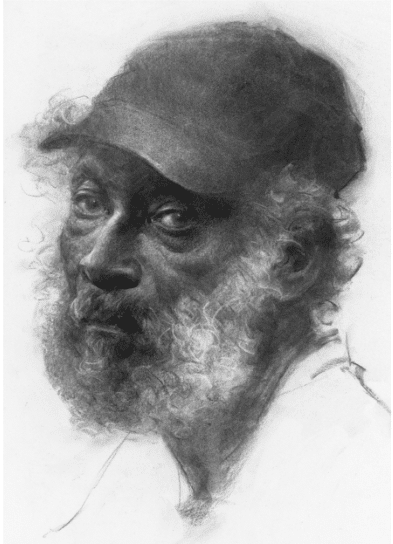
Oliver Sin, “Hope,” vine charcoal, 17×14 in.Oliver Sin teaches a course that focuses on simplified Portrait Drawing.
Many think of drawing as the essential foundation for good painting. If you think your skills could use some “professional help” (haha) check out one of the many high-quality instructional videos on drawing that you can purchase on DVD or download immediately right here.
“Superficial” Art Market Plunges
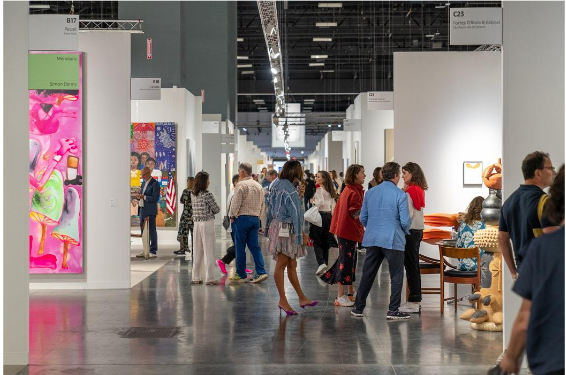
On the floor at Art Basel, one of the most important art fairs in the world for the sale of up and coming contemporary art.
Just two years ago, art’s leading auction house, Christie’s, sold a billion and a half dollar’s worth of art in a single day, but this year it’s a very different story. Since the start of 2024, the market for younger artists is down nearly 40%, representing a huge loss of billions of dollars in value, at least.
“Literally no one’s buying art,” complained one “blue chip” art dealer, but no one’s exactly surprised either. Pretty much everyone involved has understood that the market has been in a bubble for nearly two decades. Instead of great art by acknowledged contemporary masters, what’s led the way is stock-market-like trading in big, flashy, trendy art by young names.
The trouble is that investors (sometimes literally hedge funds and other Wall Street types) pay people to “discover” someone then buy up their work, build up that artist’s “brand,” inflate the work’s value, and then flip it for huger gains on the auction circuit. And everyone’s (relatively) happy – until the bottom drops out, which is what looks like is happening now.
(Actually, judging from the graph below, which albeit only goes to 2022, it appears the market may have peaked in 2021.)
“Hot young artists who were selling for a ton are now selling for a third or a quarter of what they were getting just a few years ago,” New York Times art critic Blake Gopnik told NPR Marketplace’s David Brancaccio in an interview. “Small and midsize galleries are closing like crazy — really good galleries that don’t deserve to close.
However, that’s a good thing for quality art and the serious artists devoted to making it, he said. In fact, he said, “I think the art market correction is too small. I want it to be bigger. The pain for the art market’s actually a really good thing because the market that we’ve been having has really been just plain, old-fashioned bad for art itself.”
That’s because instead of work selling well because it was excellent, that fact that an artist was selling for tons of money has been taken as the “proof” of the work’s importance, even to museum curators.
“The problem is that the market is actually supporting the wrong artists for all the wrong reasons,” Gopnik says. “What’s selling, and what’s even being shown in museums, is really splashy, superficial stuff. It’s mostly — frankly, almost entirely — big, colorful paintings that look good over a sofa.
But so much the better for sincerity and real excellence, Gopnik points out, hopefully. “Artists who were making really good art …. not being supported by the market anyways…They won’t suffer with the market going downhill.”

